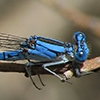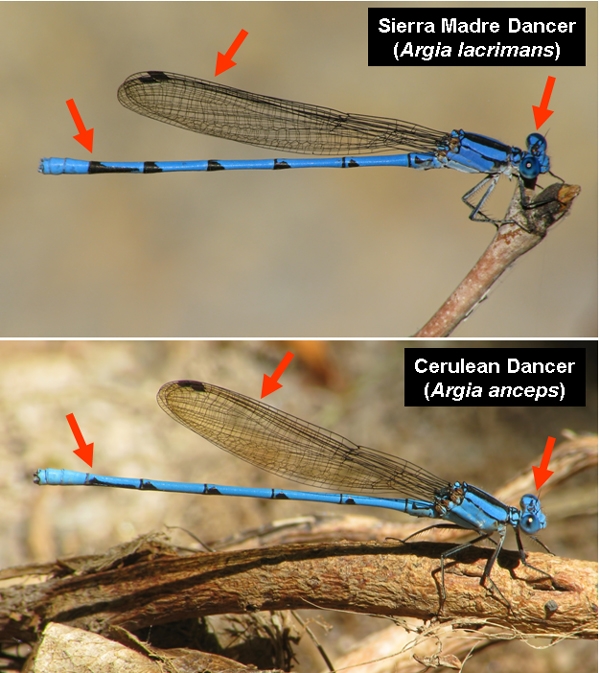In the USA the Sierra Madre, Argia lacrimans, is confined to small rocky streams of three Arizona counties (Cochise, Santa Cruz, and Pima). It is rather similar to other mostly blue Argia species (e.g., Pima and Tarascan Dancers) and even more to the Cerulean Dancer, A. anceps, a Mexican and Central America species that was not discovered in the US until 2012 and has so far been observed in Cochise and Santa Cruz Counties.
Cerulean vs Sierra Madre Dancer
-
Argia anceps
-
Argia lacrimans
Male Comparison
Size (body length):
- Sierra Madre Dancer on average larger (37.5 - 46 mm) than Cerulean Dancer (37 – 41 mm; Westfall and May, 2006), but there is partial overlap.
Wing color (see pictures):
- Sierra Madre Dancer generally has clear wings.
- The wings of Cerulean Dancer have a yellowish/amber tinge.
Face color (see pictures):
- Sierra Madre Dancer: Blue postocular eye spots delimited anteriorly and posteriorly by well-marked black bars;
- Cerulean Dancer: Face is overall blue, lacking the thick black bars of Sierra Madre Dancer
Abdomen color (see pictures):
- Sierra Madre Dancer: Segment 7 has a longitudinal stripe that ends up in a caudal spot. Spots meet dorsally, thus forming a black ring
- Cerulean Dancer: Segment 7 spots do not meet dorsally
Appendages (see pictures):
- In the hand, the appendages of the two species have a different shape



